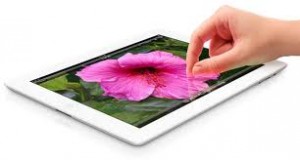 Almost everyone wants to buy a new iPad but for those who won't buy, it costs too much. According to a Baird Equity Research study the main reason for buying the new iPad is the Retina touchscreen.
Almost everyone wants to buy a new iPad but for those who won't buy, it costs too much. According to a Baird Equity Research study the main reason for buying the new iPad is the Retina touchscreen.
Priced at $499 for the Wi-Fi version the new iPad doesn't meet everyone's price points. The cheapest 10' tablet we can currently find is the 32 GB HP TouchPad that is selling for $219 at PCConnectionExpress (see TouchPad benchmark tests).
The study shows many factors why tech-savvy people want or don't want to buy the new iPad or iPad 2:
- 24% of respondents plan to buy the new iPad in the next three months.
- High price was the largest reason for not buying an iPad, cited by 60% of non-buyers.
- Among existing iPad owners, 48% indicated they plan to purchase the new iPad, with 35% of those already owning an iPad 2.
- 42% of those planning to purchase the new iPad have never owned an iPad or other tablet.
- The second and fourth cited reasons for not buying a new iPad were that customers didn’t need the iPad because they already own a laptop and smartphone, respectively.
- 15% of U.S. respondents plan to purchase the discounted iPad 2.
- When asked about reasons for purchasing the new iPad, 28% cited the Retina Display as the top reason, followed by the A5X processor at 26% and LTE at 17%.
- 28% suggested they were purchasing an iPad instead of a laptop, though close to 50% overall suggested the iPad purchase wouldn't delay the purchase of other electronic purchases.
- 78% of the U.S. sample said they own a smartphone. Android had a 39 percent share among respondents, with Apple’s iOS at 32 percent.
- 36% of respondents plan to purchase an LTE-enabled version, with previous industry estimates suggesting 80% or more of iPad sales have been WiFi only. In addition, a majority of our respondents claim they plan to use the cellular connectivity daily.
- Although 81% of of these tech savvy online respondents had a pretty good idea what 4G meant, only 41% thought they knew what LTE was.
According to CNBC Apple ownership is about the same for Democrats and Republicans. About 56 percent of the members of each party have at least one.